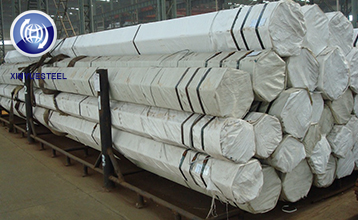Continuous improvement of refractory product variety and structure
Jun. 21, 2021
The technological development of the high-temperature industry has stimulated the research and development of refractory materials, and the product variety and structure have been continuously improved.
In the early days of the founding of the People’s Republic of China, my country’s steel industry basically adopted open-hearth smelting technology and die-casting production processes, resulting in low production efficiency and high energy consumption.
Since the 1990s, the application of the "flat conversion, full continuous casting and secondary refining" technology in the steel industry has been an important symbol of the progress of steel smelting technology.

—With the development of intensified smelting technology, some steel plants built some steel-making converters in the early 1970s, but the main body was still open-hearth steelmaking. At that time, refractories did "drag" the iron and steel industry. After Baosteel's first phase was put into production, the converter was lined with magnesia-carbon bricks, and the initial furnace age was about 2000 furnaces. The highest furnace age before slag splashing protection was 3800 furnaces. After the slag splashing protection technology was adopted, the furnace age was greatly improved. Since then, the magnesia carbon brick production technology has been promoted nationwide, and the production capacity has increased rapidly, ensuring the production demand of the iron and steel industry.
——The continuous casting ratio has increased rapidly, which has promoted the technological progress of refractory materials. In the early 1990s, my country's steelmaking and continuous casting were relatively low, and in 1990 it was only 22.3% (mainly Baosteel and Anshan Iron and Steel), and then rose rapidly, reaching 85.3% in 2000 and over 98% in 2008.
In order to ensure the supporting of the Baosteel Phase II project and the Anshan Iron and Steel project, the Ministry of Metallurgical Industry approved the expansion project of the aluminum-carbon workshop of Qingdao Refractory Plant to introduce foreign technology in order to realize the localization of the three major aluminum-carbon parts. The project was officially put into production on September 9, 1990, when the actual output of the three major aluminum-carbon pieces in the country was less than 1,000 tons. After that, the three major manufacturers increased rapidly, and their production capacity and output increased rapidly.
By 2000, there will be about 20 domestic three-piece manufacturers with an output of more than 30,000 tons. By 2019, there will be about 60 three-piece (including sizing nozzles) manufacturers (including wholly foreign-owned and joint ventures). Nearly 300,000 tons, and the output in 2020 will be more than 230,000 tons.
——With the continuous adjustment of the structure of steel varieties and the continuous increase of the proportion of varieties of steel, the technology of out-of-furnace refining is rapidly being widely used in the steel industry. In the early 1990s, the refractories used for refining outside the furnace in my country's steel industry also mainly relied on imports. With the joint efforts of refractory manufacturers and the majority of refractory science and technology personnel, the process of localization has been accelerated through introduction, digestion, transplantation and innovation. So far, domestically produced refractories for refining outside the furnace can fully meet the needs of users.
——In addition to the iron and steel industry, technological advancements in cement, glass, non-ferrous metal smelting, chemical, electric power, ceramics and other industries have also put forward new requirements for the variety and quality of refractory materials in the past 30 years. Through the joint efforts of the majority of engineering and technical personnel in the industry, the domestically produced refractory products have a complete variety and stable quality, which can fully guarantee the production and operation of the domestic high-temperature industry.



